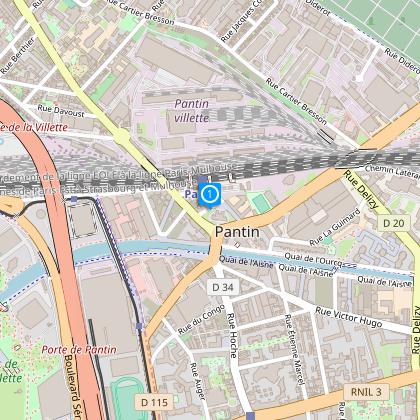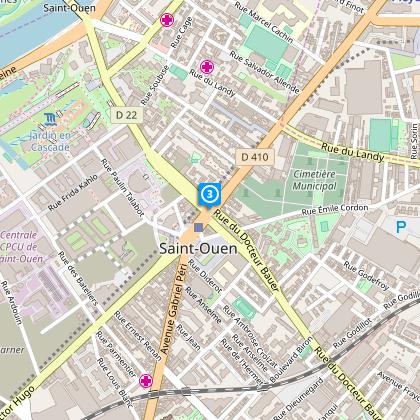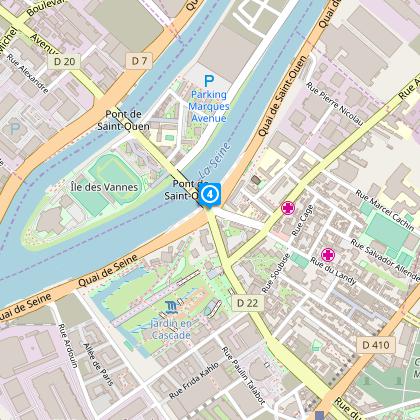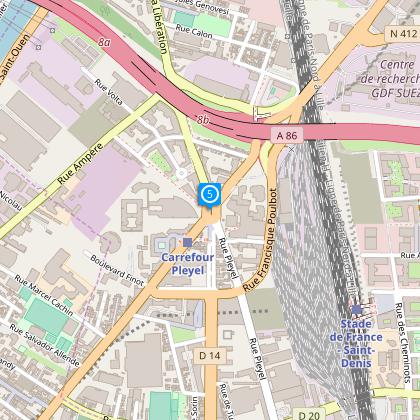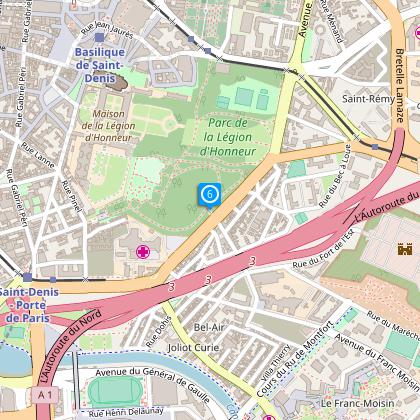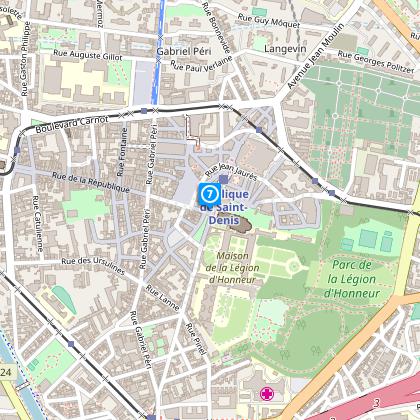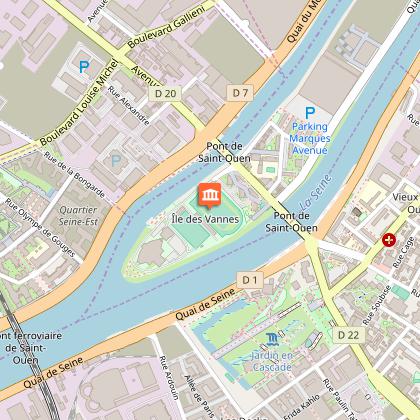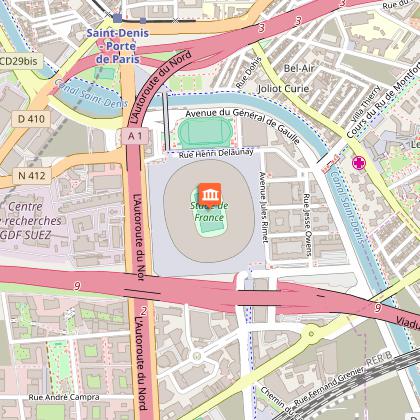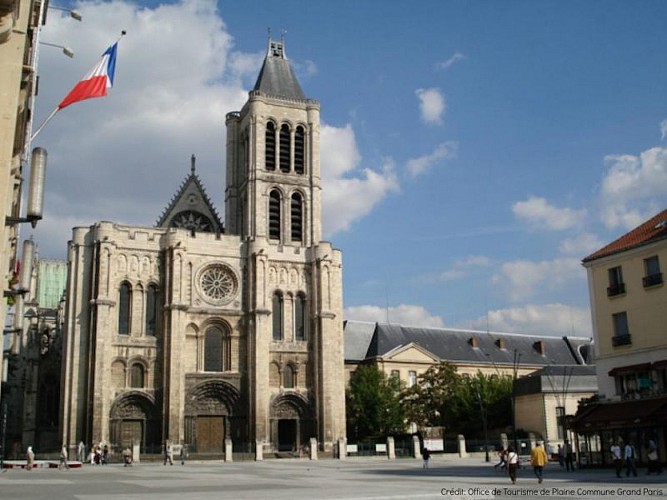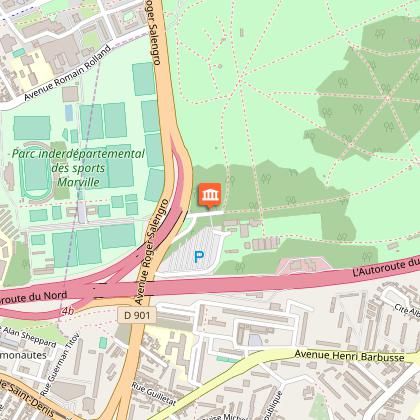Alerta
Alertas
Tipo de práctica
A pie
Fácil
6h
Presentación
Descripción
Mapa
Pasos
Puntos de interés
Resumen de Cirkwi
Calificaciones y reseñas
Ver alrededor
24 Km para 2024 Edición 2018
El resumen de Cirkwi
Explora los sitios olímpicos de París 2024 a pie: un viaje cultural
Embarcarse en este cuidadosamente diseñado paseo de FFRandonnée Seine-Saint-Denis revela no solo los futuros lugares de los Juegos Olímpicos de París 2024, sino que también une un vibrante mosaico de maravillas culturales y arquitectónicas a lo largo del Seine-Saint-Denis. Con diversas distancias, invita a los entusiastas a recorrer las calles históricas, junto al Canal Saint-Denis, y explorar el notable lienzo urbano de Street Art Avenue. Este viaje va más allá de ser solo una caminata; es una historia inmersiva contada a través de los callejones de Saint-Denis, la icónica Île de Vannes y la deslumbrante belleza del Parc départemental Georges-Valbon, todo mientras se fortalece la conexión con el espíritu atlético de los futuros Juegos Olímpicos.
Breve evaluación técnica para entusiastas
Con una distancia total de 24.049 km, que abarca una altitud mínima de 24 metros y alcanza los 56 metros, el sendero presenta un terreno modestamente desafiante con un total de elevación positiva que oscila entre 32 y 49 metros. Estructurada de manera adecuada para una variedad de participantes, la flexibilidad de la ruta en cuanto a distancia, ofreciendo opciones de 10 km, 15 km, 18 km y la ruta completa de 24 km, satisface a caminantes de todos los niveles de condición física y garantiza una experiencia integral de los lugares que serán clave durante los Juegos Olímpicos de París 2024.
Consejos de visita por temporada y seguridad
Sin importar la temporada, estar preparado mejora tu experiencia en este diverso sendero. En primavera y otoño, la superposición de capas es clave debido a las variables condiciones climáticas. El verano exige protector solar, sombreros y mucho agua para mantenerse hidratado bajo el sol. Los inviernos, aunque suaves, requieren ropa abrigada. Siempre lleva un mapa y mantiene el teléfono cargado en caso de emergencia. Además, es crucial seguir los senderos marcados para garantizar la seguridad y preservar los entornos naturales y urbanos que explorarás. Consulta las recomendaciones locales sobre restricciones temporales o eventos que puedan afectar la accesibilidad.
El pulso de Seine-Saint-Denis: un vistazo histórico
Seine-Saint-Denis presume de un rico tapiz de historia y cultura, que se fusiona perfectamente con su significado contemporáneo como sede de los próximos Juegos Olímpicos de París 2024. Desde sus orígenes como un importante centro industrial hasta convertirse en un crisol de innovación artística y arquitectónica, este departamento siempre ha estado a la vanguardia del progreso. El icónico Canal Saint-Denis y la maravilla arquitectónica del complejo deportivo Île de Vannes son testimonios del legado de la zona y su continua evolución hacia una comunidad vibrante, que refleja el espíritu enérgico que representan los Juegos Olímpicos.
Resumen del clima y mejores momentos para visitar
Seine-Saint-Denis disfruta de un clima templado, con inviernos suaves y veranos cálidos. Las lluvias están distribuidas de manera uniforme a lo largo del año, lo que hace que cualquier temporada sea adecuada para una visita. Sin embargo, para disfrutar de una experiencia de caminata más cómoda, finales de primavera a principios de verano (mayo-junio) y principios de otoño (septiembre-octubre) son ideales. Estos períodos ofrecen temperaturas agradables y menos lluvias, lo que mejora el disfrute de actividades al aire libre y la exploración de los sitios olímpicos y el rico patrimonio cultural de la región.
Embarcarse en este cuidadosamente diseñado paseo de FFRandonnée Seine-Saint-Denis revela no solo los futuros lugares de los Juegos Olímpicos de París 2024, sino que también une un vibrante mosaico de maravillas culturales y arquitectónicas a lo largo del Seine-Saint-Denis. Con diversas distancias, invita a los entusiastas a recorrer las calles históricas, junto al Canal Saint-Denis, y explorar el notable lienzo urbano de Street Art Avenue. Este viaje va más allá de ser solo una caminata; es una historia inmersiva contada a través de los callejones de Saint-Denis, la icónica Île de Vannes y la deslumbrante belleza del Parc départemental Georges-Valbon, todo mientras se fortalece la conexión con el espíritu atlético de los futuros Juegos Olímpicos.
Breve evaluación técnica para entusiastas
Con una distancia total de 24.049 km, que abarca una altitud mínima de 24 metros y alcanza los 56 metros, el sendero presenta un terreno modestamente desafiante con un total de elevación positiva que oscila entre 32 y 49 metros. Estructurada de manera adecuada para una variedad de participantes, la flexibilidad de la ruta en cuanto a distancia, ofreciendo opciones de 10 km, 15 km, 18 km y la ruta completa de 24 km, satisface a caminantes de todos los niveles de condición física y garantiza una experiencia integral de los lugares que serán clave durante los Juegos Olímpicos de París 2024.
Consejos de visita por temporada y seguridad
Sin importar la temporada, estar preparado mejora tu experiencia en este diverso sendero. En primavera y otoño, la superposición de capas es clave debido a las variables condiciones climáticas. El verano exige protector solar, sombreros y mucho agua para mantenerse hidratado bajo el sol. Los inviernos, aunque suaves, requieren ropa abrigada. Siempre lleva un mapa y mantiene el teléfono cargado en caso de emergencia. Además, es crucial seguir los senderos marcados para garantizar la seguridad y preservar los entornos naturales y urbanos que explorarás. Consulta las recomendaciones locales sobre restricciones temporales o eventos que puedan afectar la accesibilidad.
El pulso de Seine-Saint-Denis: un vistazo histórico
Seine-Saint-Denis presume de un rico tapiz de historia y cultura, que se fusiona perfectamente con su significado contemporáneo como sede de los próximos Juegos Olímpicos de París 2024. Desde sus orígenes como un importante centro industrial hasta convertirse en un crisol de innovación artística y arquitectónica, este departamento siempre ha estado a la vanguardia del progreso. El icónico Canal Saint-Denis y la maravilla arquitectónica del complejo deportivo Île de Vannes son testimonios del legado de la zona y su continua evolución hacia una comunidad vibrante, que refleja el espíritu enérgico que representan los Juegos Olímpicos.
Resumen del clima y mejores momentos para visitar
Seine-Saint-Denis disfruta de un clima templado, con inviernos suaves y veranos cálidos. Las lluvias están distribuidas de manera uniforme a lo largo del año, lo que hace que cualquier temporada sea adecuada para una visita. Sin embargo, para disfrutar de una experiencia de caminata más cómoda, finales de primavera a principios de verano (mayo-junio) y principios de otoño (septiembre-octubre) son ideales. Estos períodos ofrecen temperaturas agradables y menos lluvias, lo que mejora el disfrute de actividades al aire libre y la exploración de los sitios olímpicos y el rico patrimonio cultural de la región.
Generado automáticamente.
IGN tarjetas
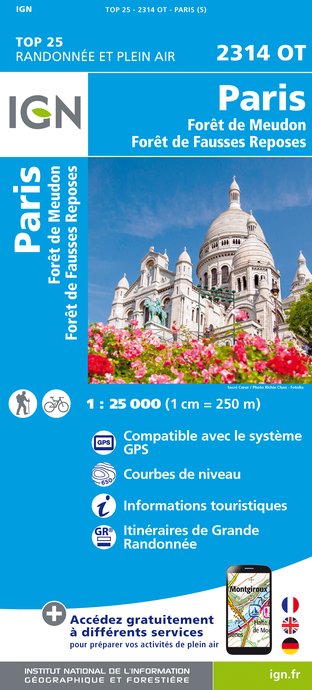
2314OT - PARIS FORÊT DE MEUDON FORÊT DE FAUSSES REPOSES
Editora : IGN
Recopilación : TOP 25 ET SÉRIE BLEUE
Escalera : 1:25 000
13.90€
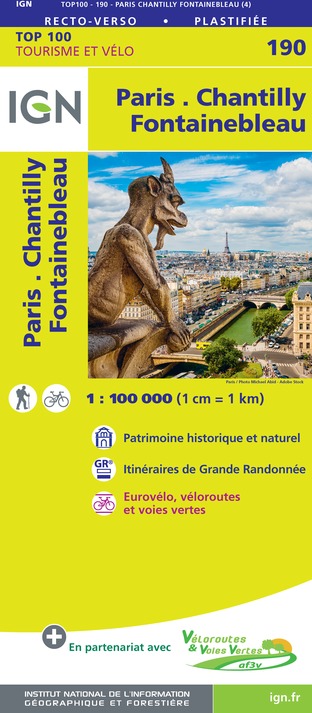
190 PARIS CHANTILLY FONTAINEBLEAU
Editora : IGN
Recopilación : TOP 100
Escalera : 1:100 000
8.40€
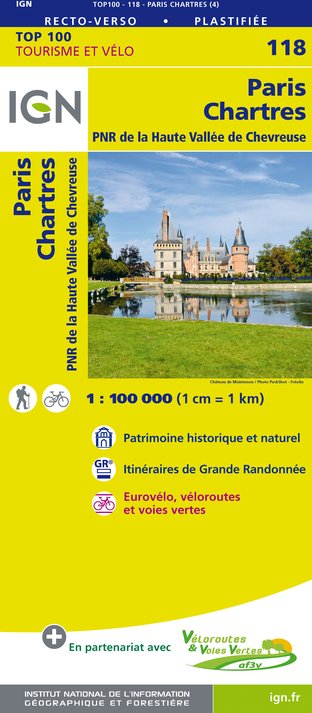
118 PARIS CHARTRES PNR DE LA HAUTE VALLÉE DE CHEVREUSE
Editora : IGN
Recopilación : TOP 100
Escalera : 1:100 000
8.40€
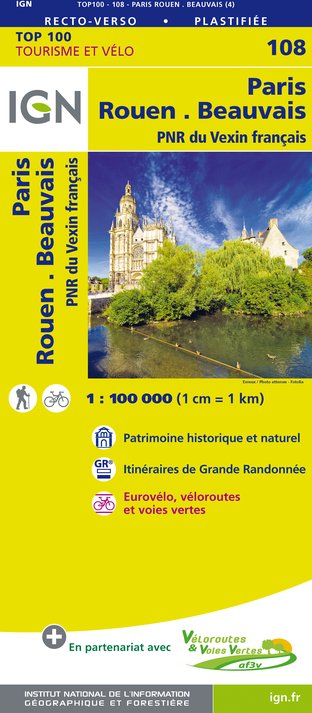
108 PARIS ROUEN BEAUVAIS PNR DU VEXIN FRANÇAIS
Editora : IGN
Recopilación : TOP 100
Escalera : 1:100 000
8.40€
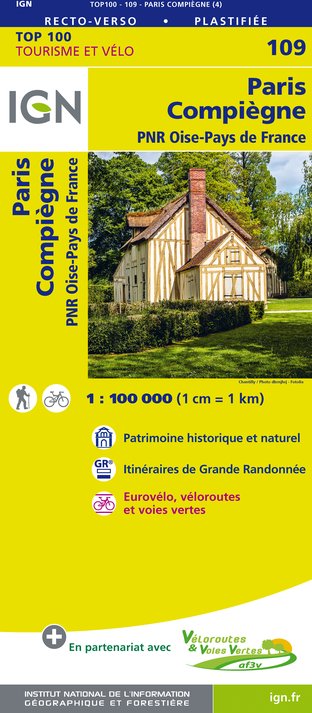
109 PARIS COMPIÈGNE PNR OISE-PAYS DE FRANCE
Editora : IGN
Recopilación : TOP 100
Escalera : 1:100 000
8.40€

D75-95 ÎLE-DE-FRANCE OUEST
Editora : IGN
Recopilación : CARTES DÉPARTEMENTALES IGN
Escalera : 1:150 000
5.90€

D77 SEINE-ET-MARNE
Editora : IGN
Recopilación : CARTES DÉPARTEMENTALES IGN
Escalera : 1:150 000
5.90€
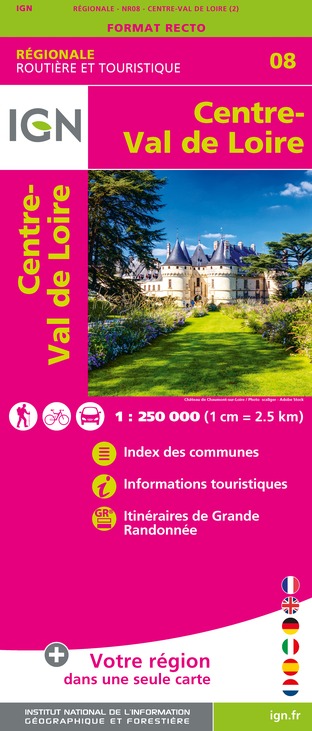
NR08 CENTRE-VAL DE LOIRE
Editora : IGN
Recopilación : CARTES RÉGIONALES IGN
Escalera : 1:250 000
6.80€

NR03 ÍLE DE FRANCE
Editora : IGN
Recopilación : CARTES RÉGIONALES IGN
Escalera : 1:250 000
6.80€

NR01 HAUTS-DE-FRANCE
Editora : IGN
Recopilación : CARTES RÉGIONALES IGN
Escalera : 1:250 000
6.80€
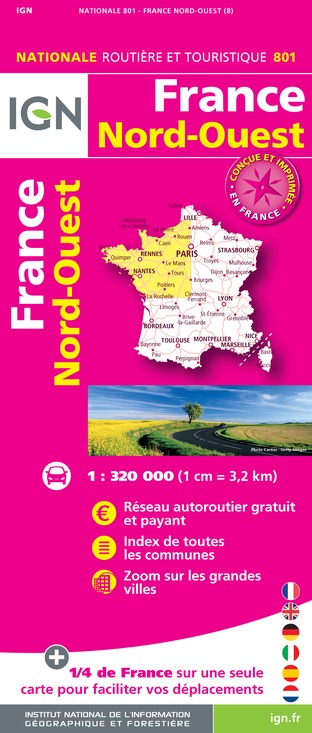
801 FRANCE NORD OUEST
Editora : IGN
Recopilación : CARTES NATIONALES IGN
Escalera : 1:320 000
6.10€

EUROPE
Editora : IGN
Recopilación : DÉCOUVERTE DES PAYS DU MONDE IGN
Escalera : 1:2 500 000
7.00€
Informaciónes técnicas
A pie
Dificultad
Fácil
Duración
6h
(1d)
Dist.
24 km
Tipo de práctica
A pie
Fácil
6h
Mostrar más
Perfil altimétrico
Punto de partida
2
Place du Président Salvador Allende
,
93500
Pantin
Lat : 48.89711Lng : 2.40083
Pasos
Puntos de interés
Autor de los datos

propuesto por
CDRP 93
1Ter Place des martyrs de la Résistance et de la Déportation 93110 Rosny-sous-Bois France
Calificaciones y reseñas
Para ver alrededor
